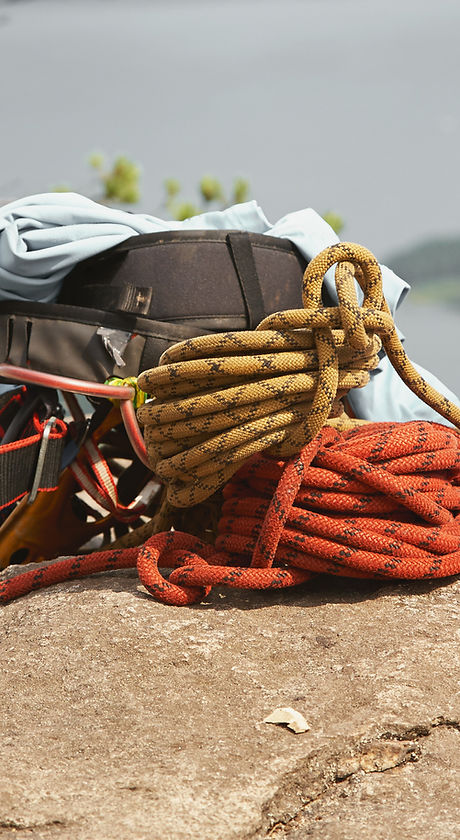Activity Adaptations & Adaptive Equipment
Common adaptations for a variety of outdoor recreation & camp activities, resources for adaptive equipment, and organizations that are experts in the field.

Adaptive Athletics Organizations & Resources
These organizations are the best in the business of adaptive athletics and equipment. For anyone considering adaptive outdoor recreation activities, this is where to start. Information, training, and more are available on a variety of activities. Further points of contact include regional & community partners involved in local areas.
MoveUnited
Outdoor Gear & Equipment
Several companies support inclusion and accessibility in the outdoors by developing and selling adaptive gear and equipment. These retailers help eliminate the barriers that can impact participation and performance. Please see individual activities on this page for specifics.
Access TR: Adaptive Recreation Equipment


Access & Ramps
Outdoor activities can often take place in areas where uneven terrain and elevated or lowered surfaces can pose mobility or transfer challenges. Access mats, ramps, and lifts can aid in addressing these challenges. Providing individuals with improved access to these environments helps strengthen inclusive practices and further promote occupational participation for all.
Access Trax Portable Access Mat
EZ-ACCESS: Ramps & lifts
Sportaid: Outdoor Mobility Equipment
Paddling & Surfing
Paddling & surfing offer a diverse range of customizable adaptations to best promote independence on an individual basis. Typical adaptations include equipment or mechanisms for self-propelling, providing additional trunk and core support, and transferring into a kayak, canoe, or onto a board. Other areas of support include increasing the stability of the vessel with outriggers, having adequate transferring benches and ramps, ensuring terrain access (see Access & Ramps), cushioning and/or positioning consideration, and arm/wrist/hand adaptations among other unique circumstances.
Team River Runner Adaptive Paddling Primer
Angle Oar: Kayaking for Everybody
Stoke for Life: Adaptive Watersports


Climbing
Climbing grants individuals with a variety of levels of independence and support based on a per-person basis. Climbing requires equipment for all who participate, and thus adaptive equipment may not be necessary. Some potential adaptations include adaptive/full-body harnesses, assisted brake devices, custom shoes, hand grips, and pulley systems.
Paradox Sports: Climbing for All
Hiking
Several companies offer a variety of walking/trekking poles which can be used therapeutically or recreationally. Poles can reduce the direct impact on joints and muscles of the lower limbs by redistributing body weight carried by the legs. Poles are particularly useful when traversing steep descents, where harsher impacts and faster momentum can disrupt balance or cause lower limb pain. Nordic walking and the use of poles can also support postural stability, stride length, bilateral movement, and gait stability.
How to Choose and Use Trekking Poles and Hiking Staffs


Swimming
Swimming promotes motor coordination, strength, independence, and joy. Individuals with varying ability levels can benefit from learning to swim. Organizations aimed at adaptive swimming programs detail techniques for teaching water safety, utilizing personal flotation devices, and promoting independence in the water. Aquatic therapy is also practiced by both OTs and PTs, making those with experience in these practice areas ideal for connecting with at a community level. Additional considerations to how the water can be accessed should be made.
USA Swimming: Disability Committee
Sunsational Swim School: Adaptive Swimming Techniques
SeaOtter Swim: Adaptive Program
Archery
The adaptive archery world is largely supported by the development of the USA Archery Adaptive Archery Manual. This manual was developed in partnership between USA Archery and Move United. This resource is valuable for those looking to learn more about incorporating archers of all abilities into existing archery programs. Typical accommodations are made for range set up, equipment, fitting, and shooting.
USA Archery:
Adaptive Brochure for Clubs & Coaches
Archery 360: Ways to Modify Your Gear


Horseback Riding
Horseback riding provides individuals with an opportunity to engage with animals as they develop their physical, cognitive, and emotional skills. Coordination, balance, strength, flexibility, and posture are all physical skills involved and developed with horseback riding. Riders also develop a bond with their horses and learn the importance of animal care. Hippotherapy, or the use of horseback riding as a therapeutic treatment, is utilized by OTs, PTs, and SLPs. Adaptations to horseback riding often include mounting assistance, individualized instruction, and additional trunk support. Professional Association of Therapeutic Horsemanship International (PATH Intl.) is widely regarded as the premier credentialing organization for accrediting centers and certifying instructors.
PATH International: Mounting Ramp
National Center for Equine Facilitated Therapy: Common Questions About Adaptive Riding
Camping
Camping remains an integral aspect of outdoor recreation and enjoyment in nature. The U.S. Forest Service has developed Outdoor Recreation Accessibility Guidelines (FSORAG) that may be used by other entities to define best practices for recreation areas, including campsites, picnic tables, fire rings, grills, benches, tent platforms, and other essential aspects to developed campsites. The U.S. Access Board, responsible for advancing full access and inclusion for all in accordance with the Americans with Disabilities Act (ADA) and the Architectural Barriers Act (ABA), has also developed guidelines for camping facilities in their 2013 amendment to ABA Standards. See the Accessibility Standards & Guidelines page for more information about the FSORAG and U.S. Access Board. Additional consideration and insight into accessible camping is provided below.
U.S. Forest Service Outdoor Recreation Accessibility Guidelines
U.S. Access Board ABA Standards: Camping Facilities


Rifling & Fishing
Rifling and fishing adaptations often include equipment for mounting, handling, trigger activation, casting, and reeling. Several companies offer this equipment with options based on varying ability levels. Fishing Has No Boundaries, a non-profit organization, aims to promote recreational fishing opportunities for anglers of all abilities and benefit the inclusive fishing community through advocacy, research, and community partnership.
Fishing Has No Boundaries: Adaptive Equipment
Be Adaptive: Adaptive Hunting, Shooting, and Fishing Equipment

